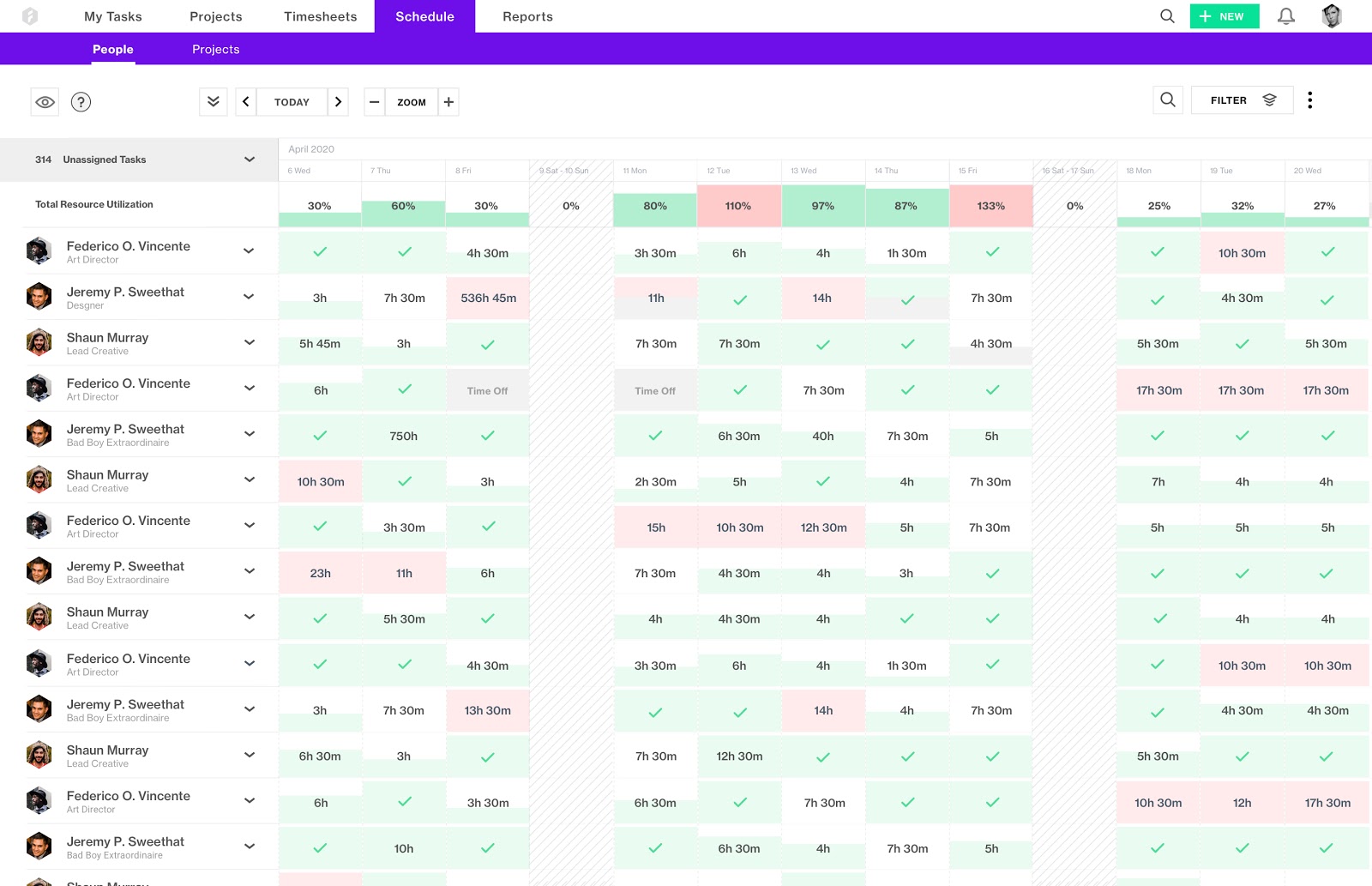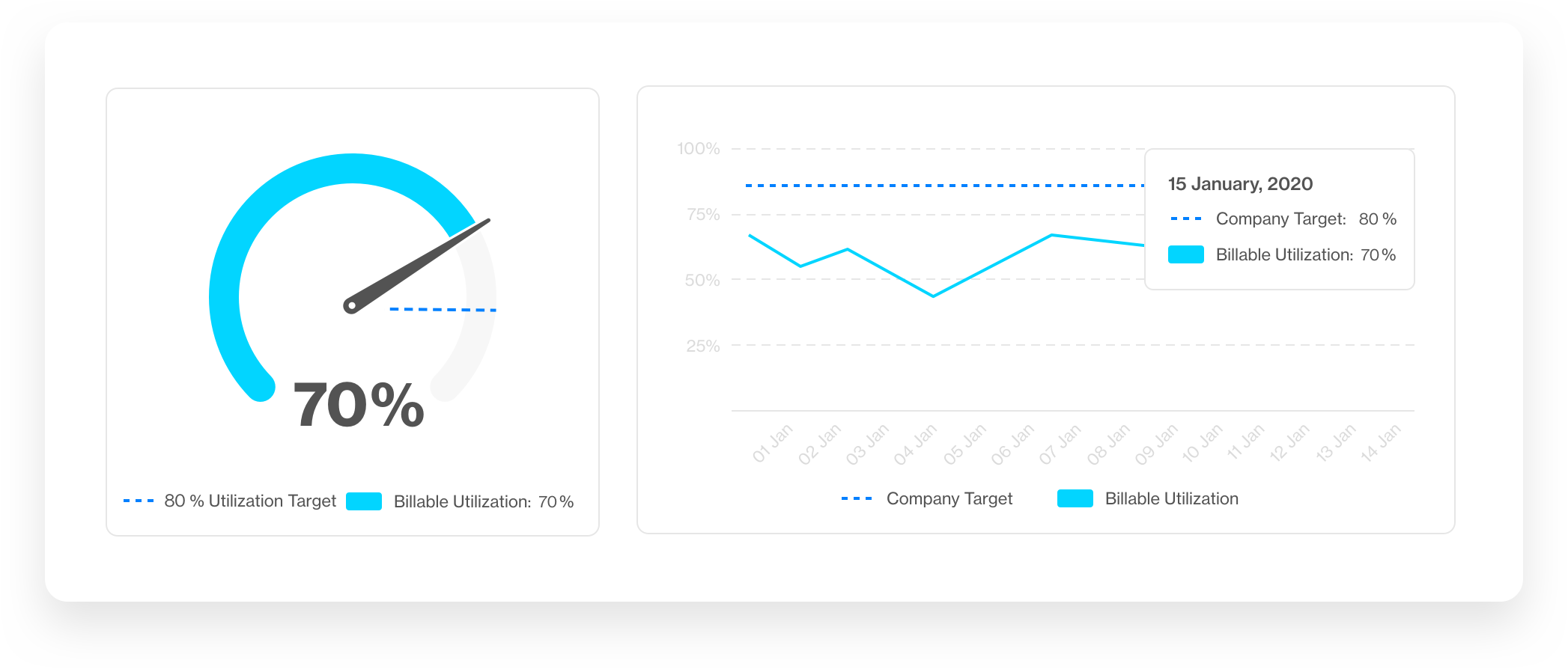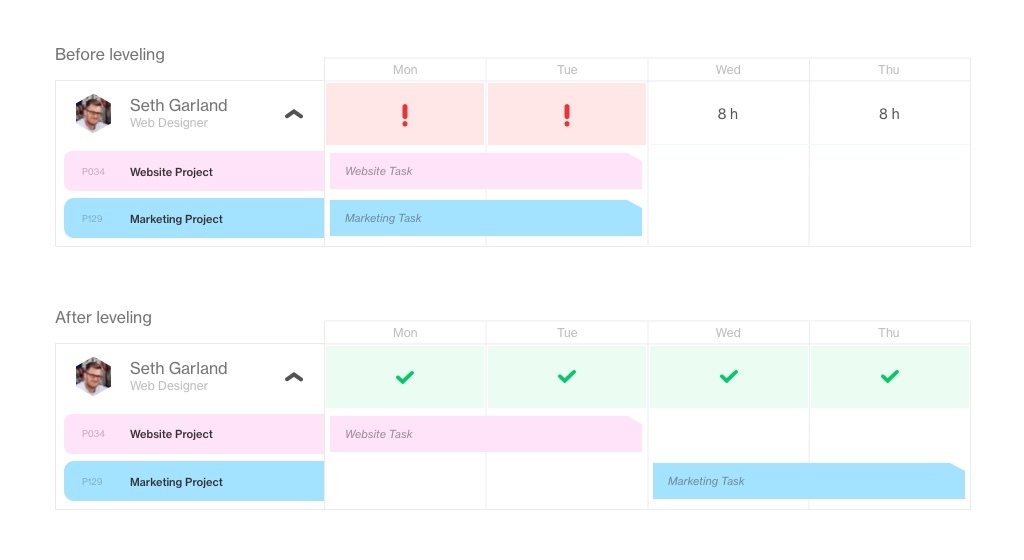How to Balance Peaks & Troughs of Resource Activity in an Agency

Creative agencies, big and small, are prone to experiencing a specific type of operational challenge - huge swings in the utilization of labor, also known as the highs and lows of resource activity. The reason being the lack of lead time to organize resources and poor resource scheduling practices.
According to Deltek, two-thirds of agencies globally find it difficult to adjust plans when new projects come in or priorities change. This typically leaves many knowledge workers at the end of the two extremes - overwhelmed or idle, and contributes to an unhealthy work environment.
All too often, at this pell-mell pace, every agency runs into problems of diminishing returns and enters a vicious cycle of inefficient processes. In this short five-step guide, we’ll show you how to turn this ship around.
1. Introduce task-based resource allocations
At any case, balancing peaks and troughs of resource activity starts with matching work with the right talent. You’ve got two options here right off the bat: allocating resources to projects or tasks. In agencies, the work to be done is usually quite predictable - you have a list of requirements from your client that can be translated into tasks in advance. This setup makes task allocations a perfect fit for agencies to build out their resource schedule company-wide.
So what is task allocation? Task allocation is essentially a slot of tasks you assign to your team member, expected to be finished by a certain deadline. Every task belongs to a project and has a rough estimate. By tallying up the estimates, you can immediately see when the employee is overbooked with work or available for taking additional tasks.
Mind that by using task-based resource allocations, it’s very easy to see whether you’re crossing the normal schedule of your employees or not.
Read on: 6 Resource Allocation Best Practices You Can't Afford to Ignore
2. Create a resource schedule
As you head into another project, the best place to start is always by planning out your capacity and checking everyone’s availability. However, allocating people to tasks and tracking their workloads doesn’t operate on a typical Google calendar (e.g., monthly or weekly) and, therefore, it requires a different approach to task tracking than most people commonly use.
In Forecast, we’ve built a Resource Schedule that connects with your projects and tasks to provide the full picture of your entire agency’s resource allocations. It gives you one thing agencies need badly - visibility into their team’s planned and current workload management.

Creating a balanced schedule is not easy - it requires forecasting, and communicating with others and yourself about your objectives.
3. Start registering time
There are numerous benefits to tracking time in an agency. First of all, it will help you see where your team's time is going. Second, you'll be able to discern how much time everyone spends daily, and on which tasks. These two capabilities help you make smarter decisions about your employees’ productivity as well as the efficiency of your company as a whole. Also, this is exactly how you'll be able to see the peaks and troughs of resource activity. In fact, without tracking time, the next step will be impossible!
4. Measure resource utilization
With resource capacities fluctuating constantly, management has to step in and monitor the situation. Resource planning is nearly not enough, you’ve got to keep an eye on what’s happening in real time when the project has started. Fortunately, there's one simple metric that shows you the peaks and troughs of your business's resource activity in real time: utilization.
Resource utilization means ‘time spent working,’ and is thus a measure of time spent productively. Check our beginner’s guide to resource utilization here.
5. Apply resource-leveling techniques
If you notice some resources have higher utilization than the others in the utilization report, it means that a) their work is in high demand, b) their workload should be spaced out, using a resource leveling technique.
In project management, resource leveling is the process of distributing work evenly among resources to smooth out peaks and valleys in order to create a realistic project schedule. It re-establishes the required balance between resources and capacity available to execute a project and can be achieved through end-to-end resource scheduling or by adjusting task dates. Typically, it is applied to individual resources that are over- or underallocated to straighten out the workloads.
However, if you work with a bigger team, spacing out workloads can be a tad manual. That’s why agencies turn to auto-scheduling to automate this process. That’s why I strongly recommend that any agency, no matter how small it is, needs to get a simple but efficient resource management tool. Not only will it inform your hiring decisions, but it will also be beneficial for operational efficiency.
Check out Forecast to see how you can take your project and resource management to the next level.
You might like to read these articles on our blog..
Subscribe to the Forecast Newsletter
Get a monthly roundup of productivity tips & hacks delivered straight to your inbox
